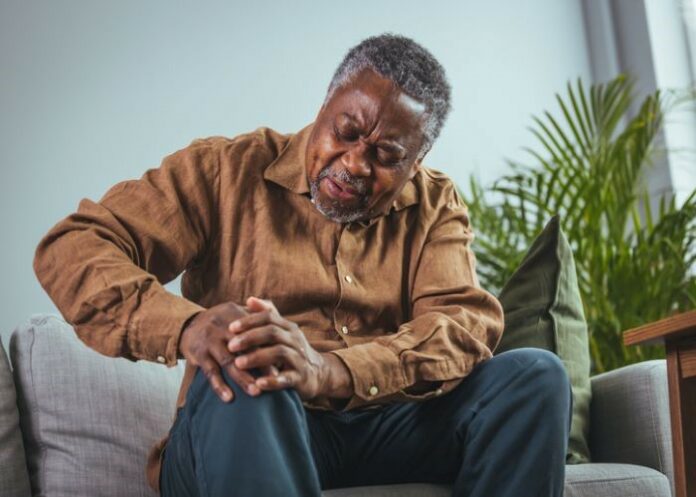More than 4% of people live with chronic pain – identified as pain that lasts longer than expected – yet ignore it, or don’t seek help, but Dr Russell Raath, a specialist anaesthesiologist and owner of a Pretoria “pain clinic”, says the sooner the pain is identified and treated, the higher the chances of success.
If pain is ongoing, he says, don’t ignore it – seek help. Even if it is intermittent pain after a sprain or surgery that doesn’t go away, it's time to get help.
The International Association for the Study of Pain defines chronic pain as “an unpleasant, sensory and emotional experience which could be associated with tissue damage”, reports Daily Maverick.
Raath says he believes “it is pathetic that patients who suffer from chronic pain are often told to make pain their friend”, adding that patients who suffer from pain shouldn’t simply be referred to psychologists or psychiatrists who put them on anti-depressants.
It’s notoriously difficult to treat, and the success rate – for effective treatment – is not high, says Professor Sean Chetty, president of the Pain Society of SA and executive head of the Department of Anaesthesiology and Critical Care at Stellenbosch University.
Chetty says pain, its causes and remedies, is poorly taught at medical schools worldwide.
In South Africa the field is not recognised as a sub-specialty.
Pain patients are vulnerable and desperate. This puts them at risk of falling victim to unscrupulous practitioners who may perform unnecessary procedures that are not strictly scientifically based.
Chetty believes surgery should only be considered once all other options have been exhausted. Treating chronic pain successfully often involves shifting the focus from curing the pain to relieving it.
The difference between chronic pain and acute pain
Acute pain
Acute and chronic are very different in nature. Acute pain is often the result of damage to tissue. When an injury occurs, the spinal nerves carry messages from the body to the brain to tell it what is going on. Acute pain is often also called nociceptive pain. Self-medication, analgesics, anti-inflammatory drugs, muscle relaxants and physio- therapy are usually sufficient to reduce or block these messages before they reach the brain.
Once the injury heals, the messages and the pain stop.
Chronic pain
Raath explains that chronic pain occurs when nerves are damaged. Actual physical changes take place in the nervous system, which sends the messages to the brain. It happens primarily in the spinal cord.
These damaged nerves become the disease.
Chronic pain could start as acute pain; when this happens, the nervous system has been damaged and neuropathic changes have taken place. One example is shingles, which starts as a viral infection. Once it has cleared, damaged nerves could cause chronic pain.
Treatment of chronic pain
Chetty says the sooner chronic pain is identified and treated, the better the chances of success. Treatment could involve biological management, psychological therapy and physical rehabilitation. The approach taken to treat chronic pain will depend on the diagnosis and patient’s profile.
A doctor will usually discuss the benefits and risks of the various medical procedures with the patient. Early treatment will prevent neuropathic changes taking place.
Once these changes set in, it is difficult to remove pain completely. Chetty says when we have an acute injury, the sensory neurons that send messages to the brain are activated.
When the pain is ongoing, the repeated messages can change the connections and structure of the brain. The brain memorises these signals, setting off an increasing number of chemicals and connections in the brain and spinal cord, which could be compared to the click of a metronome.
After a while we anticipate these clicks or signals even before they happen until, eventually, the brain becomes over-sensitised and reacts to these anticipated signals. As a result, we may experience pain even though there are no new stimuli.
Raath adds that this partly explains phantom pain, where a patient may experience pain in a limb that has been amputated. Early medication could stop or block these anticipated messages.
Associate Professor Palesa Motshabi, Academic Head of the Department of Anaesthesiology at Wits University, believes chronic pain could be prevented if pre-habilitation were introduced before major surgery.
A multi-disciplinary team could give patients about to undergo operations such as thoracic or cancer surgery, information and therapy beforehand. This could help speed up recovery in those predisposed to chronic pain.
Patients who may be prone to post-operative chronic pain include young people, females, smokers and those with a history of depression or anxiety. Ethnicity has also shown to play a role in the experience of pain.
Chetty advises anyone who has chronic pain to investigate and learn about the subject and the treatment options available.
“Knowledge is our greatest weapon,” he says. “There are lots of resources on the internet. Discuss these with your medical practitioner. There is always something we can do to help a patient – our goal is to improve their quality of life”.
Daily Maverick article – Why you should not ignore pain – ever (Open access)
See more from MedicalBrief archives:
Ibuprofen may worsen some chronic pain and increase risk of kidney injury in BP patients
CDC eases guidelines on opioid prescribing for chronic pain
New UK guidance: Acupuncture rather than drugs for chronic pain
NIH report: ‘A silent epidemic' of chronic pain

